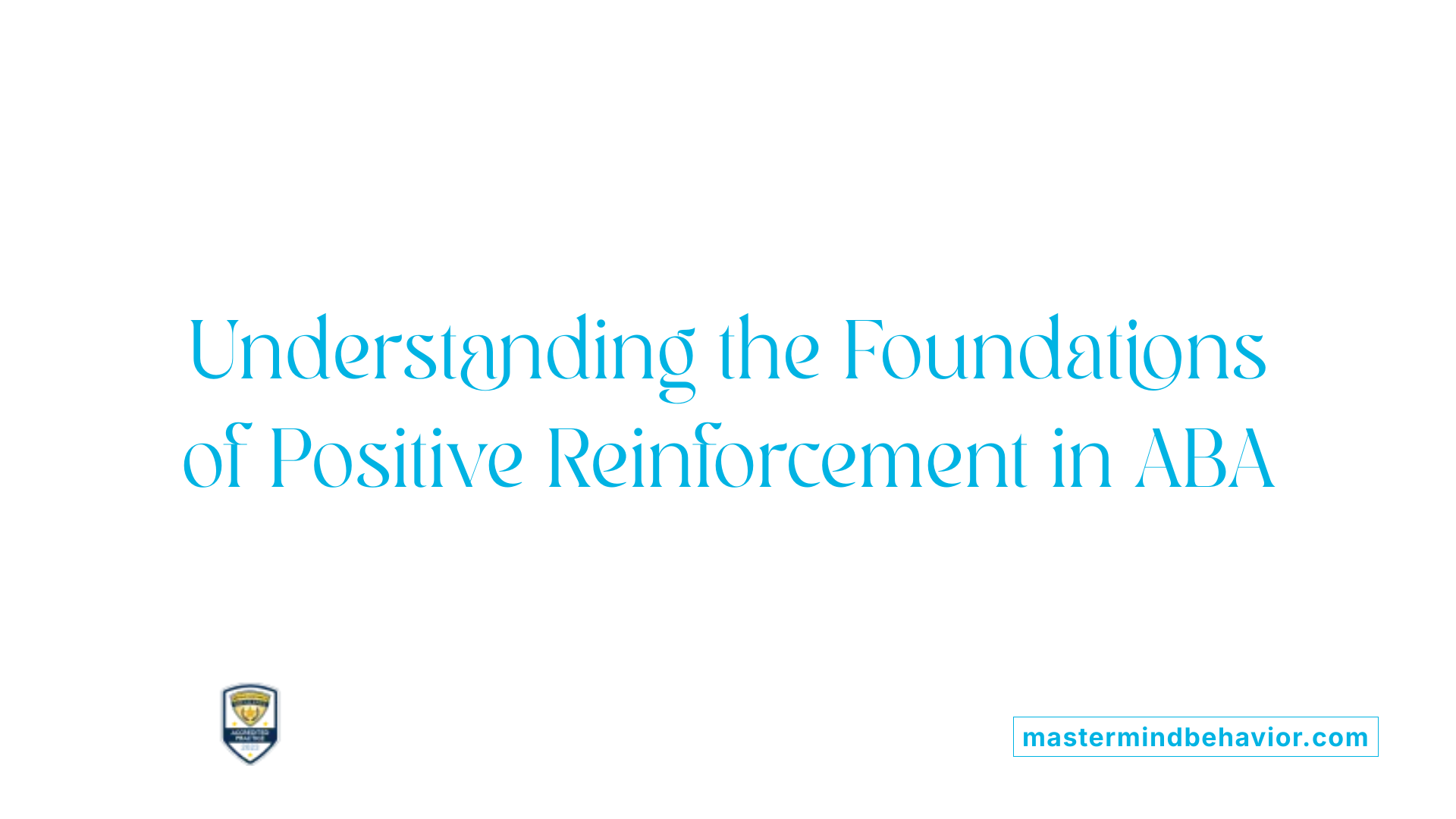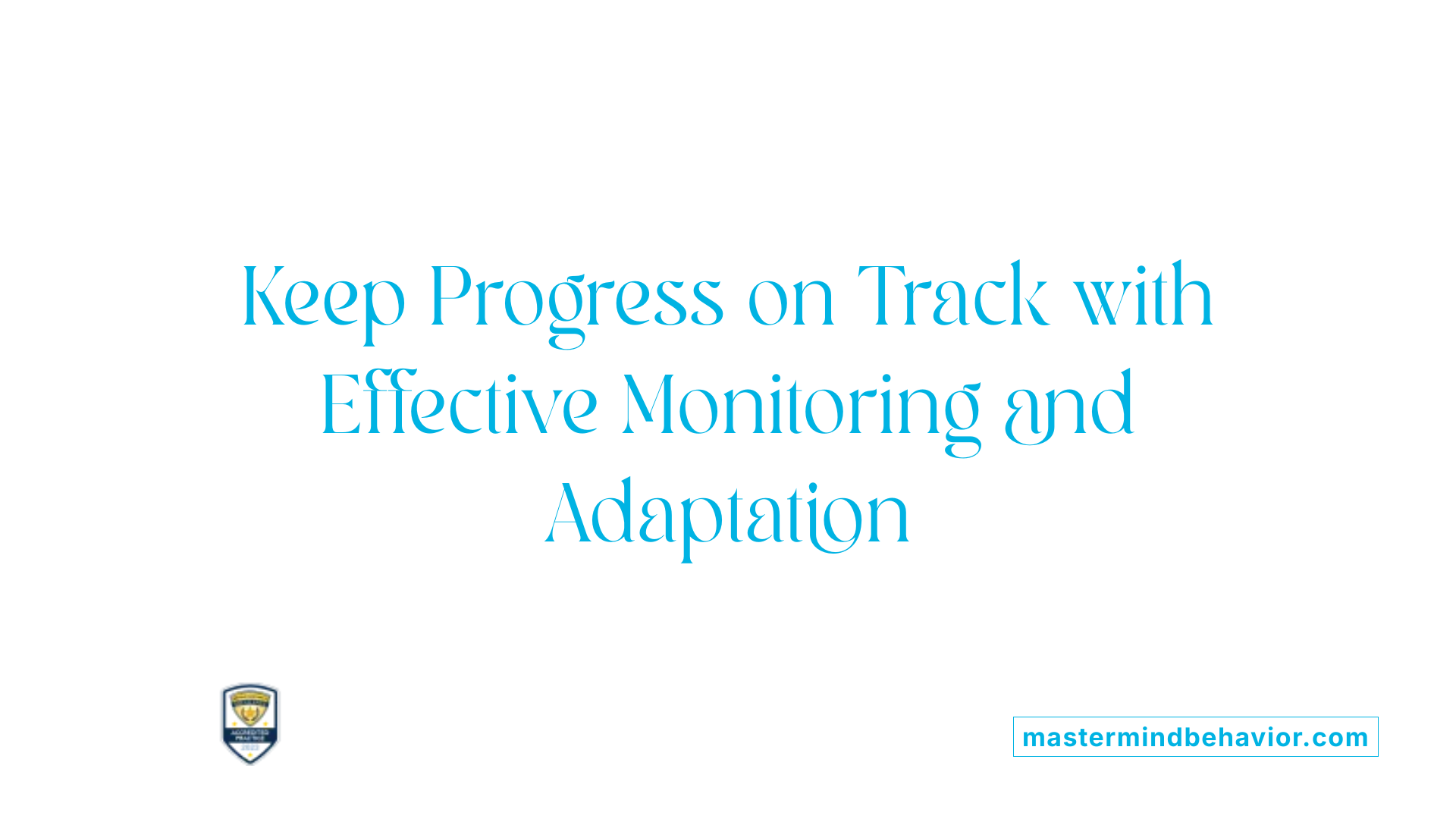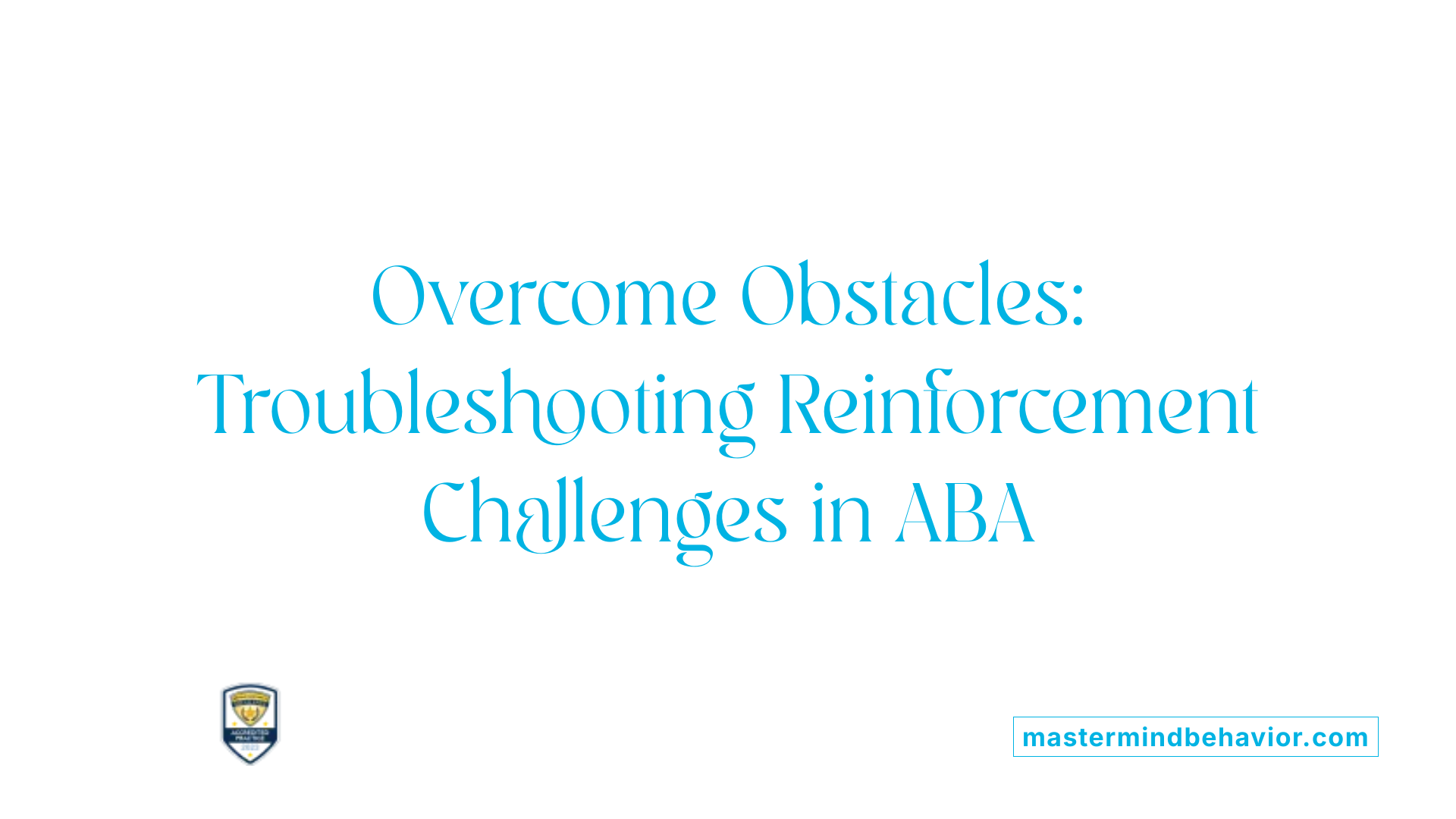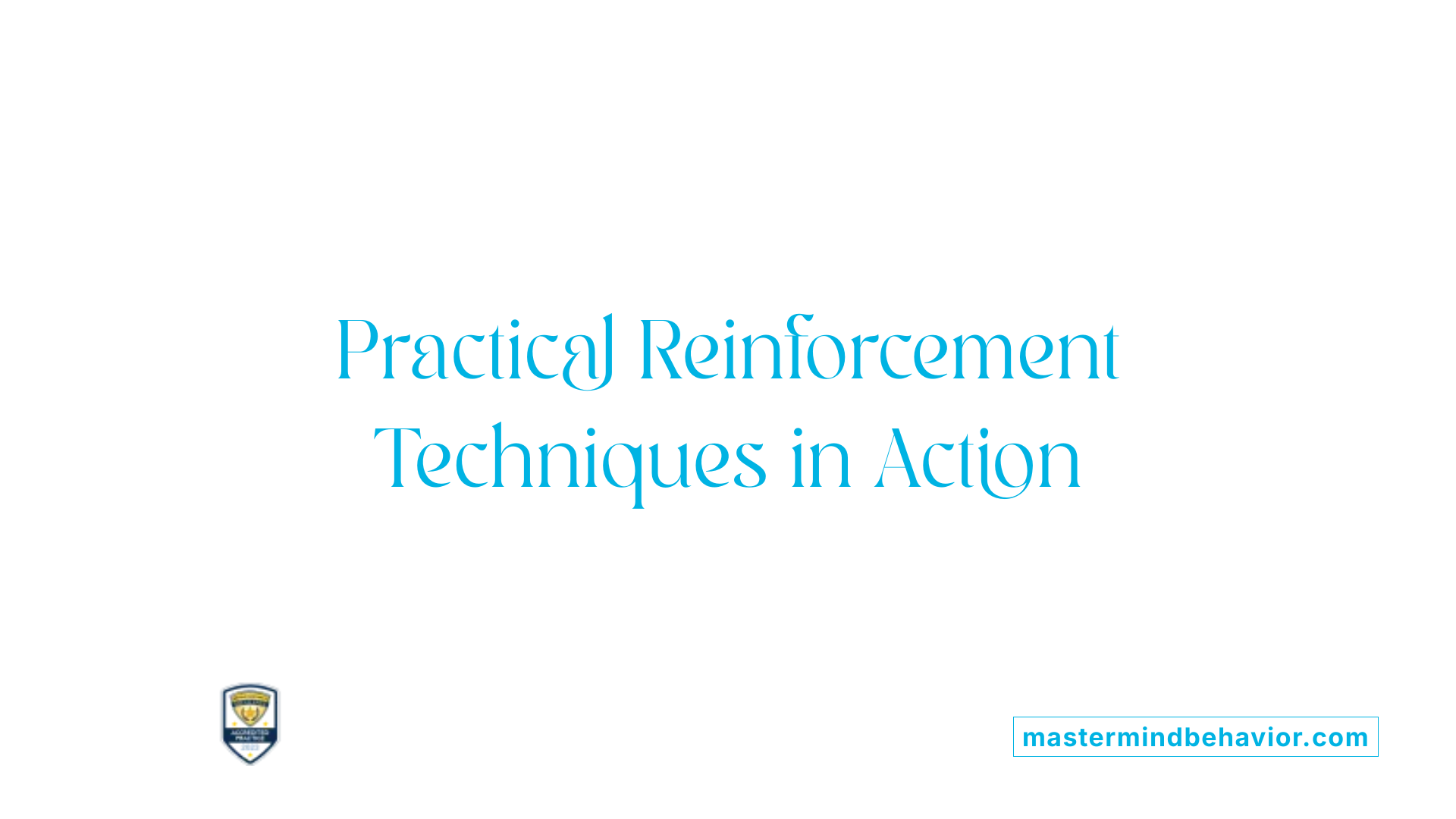Understanding the Foundation of Reinforcement in ABA
Positive reinforcement stands as a cornerstone of Applied Behavior Analysis (ABA), a scientifically supported approach to fostering meaningful behavior change. By consistently rewarding desired behaviors, ABA practitioners and caregivers can promote skill development, confidence, and independence. This article explores core principles, types of reinforcement, practical implementation, and strategies for monitoring and troubleshooting to optimize outcomes across settings.
Core Principles of Positive Reinforcement in ABA

What are the core principles of positive reinforcement in ABA therapy?
Positive reinforcement is a foundational technique used in Applied Behavior Analysis (ABA) to encourage desired behaviors by adding a rewarding stimulus immediately after the target behavior occurs.
One of the main principles is presenting a desirable stimulus, known as a reinforcer, right after the behavior, which increases the chances of that behavior happening again. This immediacy helps the child make a clear connection between their actions and the reward.
Selecting stimuli that hold personal meaning for the individual is vital. Reinforcers can include verbal praise, tangible items like toys or treats, access to preferred activities, or social acknowledgment like smiles or high-fives. Knowing what the child values ensures that reinforcement effectively motivates them.
Consistency and promptness are also crucial. Reinforcers should be delivered promptly after the behavior to strengthen the association. Teaching prompts and routines, combined with immediate reinforcement, help children learn new skills efficiently.
Effective reinforcement involves clear identification of target behaviors and choosing the right reinforcer for each child. For example, a child might respond better to a favorite sticker rather than just verbal praise. The reinforcement is applied only if the behavior occurs, making it contingent.
Applying reinforcement proportionately and at the right moment can influence learning trajectories positively. Reinforcement should be appropriately sized—enough to motivate but not so much that it overshadows intrinsic motivation. Sometimes, reinforcement is gradually made more challenging or less frequent, encouraging independence.
Overall, these principles aim to promote skill development, increase motivation, and build confidence. By consistently applying these core strategies, practitioners help children develop beneficial habits across different settings, reinforcing positive growth and behavior change.
Types of Positive Reinforcement Used in ABA
What are the different types of positive reinforcement used in ABA?
In Applied Behavior Analysis (ABA), positive reinforcement involves adding a pleasant stimulus to encourage the repetition of a desired behavior. Several types of reinforcement are used to motivate learners and promote positive development.
One common form is social reinforcement. This includes verbal praise, smiles, high-fives, and other gestures that express approval. These social cues are powerful because they appeal to the child's social and emotional needs, making the behavior more likely to recur.
Tangible reinforcement involves offering physical rewards such as toys, stickers, treats, or other tangible items that the child values. These rewards are especially effective when they are directly related to the child's interests and preferences.
Natural reinforcement happens automatically as part of the behavior itself. For example, if a child requests an item and receives it, the natural consequence reinforces the requesting behavior. This type of reinforcement helps children understand the direct link between their actions and outcomes.
Activity-based reinforcement provides access to preferred activities. For instance, allowing extra computer time, playtime, or engaging in favorite hobbies serves as an incentive. By associating specific behaviors with enjoyable activities, children are motivated to perform those behaviors more often.
Token economy systems involve earning tokens or points for engaging in desired behaviors. These tokens can then be exchanged for larger rewards or privileges. This systematic approach helps learners connect their behaviors with meaningful incentives over time.
Using a combination of these reinforcement types allows therapists and caregivers to tailor strategies to each child’s unique preferences. The goal is to select reinforcers that are motivating and relevant, thereby increasing the likelihood that the behavior will be repeated.
To maximize effectiveness, reinforcement should be immediate, contingent on the behavior, and presented consistently. Monitoring the child's response and adjusting reinforcement strategies as needed ensures sustained progress. This adaptive approach fosters learning and helps embed positive habits in a variety of settings.
Practical Implementation of Reinforcement Strategies
To effectively use positive reinforcement in ABA therapy, consistent application across home and clinical settings is crucial. Rewarding children immediately after they display desired behaviors encourages them to repeat those actions. Common reinforcers include verbal praise, stickers, tokens, or privileges, which should be meaningful to the child.
Identifying target behaviors is the first step. Conducting a functional analysis helps determine what motivates the child and what behaviors need to be increased or decreased. Based on this, tailored reinforcement plans can be designed.
Visual supports such as charts, pictures, or token economies are valuable tools. These help children understand what behaviors are expected and what rewards they can earn. Reinforcement schedules—like immediate, intermittent, or delayed—are structured to gradually foster independence and intrinsic motivation.
Structured routines and task analysis simplify complex behaviors into manageable steps, making learning more predictable and rewarding. Techniques like prompt fading help children reduce reliance on cues, while functional communication training improves their ability to ask for preferred items or activities.
Collaboration with behavior analysts and ongoing communication with parents ensures reinforcement strategies stay effective. Parental involvement and training are key, as they help maintain consistency and support skill generalization beyond therapy sessions.
Overall, employing a combination of visual supports, scheduled reinforcement, and family participation creates a supportive environment that promotes positive behavioral changes. Regular monitoring and data collection allow caregivers and professionals to adjust strategies, ensuring each child's unique needs are met and progress is sustained.
Distinguishing Positive Reinforcement from Negative Reinforcement
How does positive reinforcement differ from negative reinforcement in ABA?
In Applied Behavior Analysis (ABA), understanding the difference between positive and negative reinforcement is crucial for effective behavior intervention. Both methods aim to increase the likelihood of a desired behavior, but they do so through different processes.
Positive reinforcement involves adding a desirable stimulus immediately after a behavior occurs. For example, giving a child praise or a sticker when they complete a task encourages them to repeat that behavior in the future. This method relies on presenting something positive to reinforce the behavior.
Negative reinforcement, on the other hand, involves removing an aversive or unpleasant stimulus following a behavior. For instance, if a child is allowed to skip chores after completing homework, the removal of the chores acts as a negative reinforcement, increasing the probability that the child will complete homework in the future to avoid chores.
Both approaches serve to strengthen behavior but operate through opposite mechanisms. Positive reinforcement adds a stimulus to encourage behavior, while negative reinforcement subtracts an undesirable stimulus to achieve the same goal. Recognizing these differences helps practitioners choose the most appropriate strategy for each individual and situation.
Using positive reinforcement effectively involves pairing behaviors with rewards like praise, tokens, or preferred items, which creates positive associations. Conversely, negative reinforcement should be applied carefully to avoid unintentionally reinforcing undesired behaviors, such as avoidance or escape responses.
In summary, the main distinction lies in the nature of the stimulus change: positive reinforcement adds a desirable stimulus, whereas negative reinforcement removes an unpleasant one. Both methods can be powerful tools in shaping behavior when used appropriately.
Effective Strategies and Techniques for Reinforcing Positive Behaviors

What are some effective strategies and techniques for reinforcing positive behaviors?
Reinforcing positive behaviors in ABA therapy relies heavily on some well-planned strategies. A fundamental approach is ensuring reinforcement is immediate and consistent. When rewards follow a behavior promptly, children more easily associate the action with the reward, which strengthens their motivation to repeat the behavior.
Tailoring reinforcement to each child's preferences is another crucial aspect. What motivates one child may not motivate another; hence, selecting reinforcers such as verbal praise, tangible rewards like toys or treats, or activity-based incentives like extra playtime makes interventions more effective.
Using systems like token economies can also enhance motivation. In these setups, children earn tokens for desired behaviors, which they can exchange for larger rewards. This strategy combines reinforcement with visual cues and progress tracking, making learning tangible and motivating.
In addition to tangible rewards, modeling and prompting are valuable techniques. Behavior modeling allows children to observe desirable behaviors, while prompts – verbal or physical cues – guide them toward the correct action. Prompt fading gradually reduces assistance, fostering independence.
Shaping involves reinforcing successive approximations of a target behavior, gradually guiding children toward complex skills. Prompt fading and errorless learning strategies minimize frustration and errors, encouraging confidence and persistence.
In natural settings, social stories and functional communication training help children understand when and how to use new skills, making reinforcement more meaningful and generalized across environments. Natural environment training emphasizes practicing behaviors in everyday contexts, promoting real-world application.
Careful monitoring and periodic adjustment of reinforcement schedules sustain progress. Regular data collection enables practitioners to identify what works and modify strategies accordingly, ensuring that reinforcement remains effective and engaging.
In summary, combining immediate and consistent reinforcement, individual preferences, various reinforcement techniques, behavioral shaping strategies, and adaptive monitoring creates a comprehensive approach. This multi-faceted method helps foster positive behaviors, skill development, and overall growth in children undergoing ABA therapy.
Monitoring and Adapting Reinforcement Strategies
 To optimize the effectiveness of reinforcement in ABA therapy, consistent monitoring and adjustments are essential. Regular collection of behavioral data through logs, charts, or visual resources helps practitioners objectively track progress. Observing the frequency, intensity, and duration of targeted behaviors provides insight into whether current reinforcement methods are motivating children as intended.
To optimize the effectiveness of reinforcement in ABA therapy, consistent monitoring and adjustments are essential. Regular collection of behavioral data through logs, charts, or visual resources helps practitioners objectively track progress. Observing the frequency, intensity, and duration of targeted behaviors provides insight into whether current reinforcement methods are motivating children as intended.
Adjustments may involve changing the type of reinforcement—such as switching from social praise to tangible rewards—or altering the timing and schedule. Differential reinforcement techniques can be employed to strengthen desirable behaviors and diminish problematic ones. Visual supports like charts or token systems can boost understanding and engagement, making reinforcement more meaningful.
Continuous assessment by trained professionals ensures that reinforcement remains appropriate and effective as the child's needs evolve. Ethical considerations include tailoring reinforcement strategies to individual preferences and ensuring consistency across all environments. Overall, ongoing evaluation and flexibility create a supportive framework that encourages positive development and helps achieve therapy goals.
Addressing Challenges and Troubleshooting in Reinforcement Implementation

How can I maintain motivation for children over time when using positive reinforcement?
Maintaining motivation is a common challenge in ABA therapy. Children can become satiated or lose interest in certain rewards after repeated use. To keep motivation high, it’s helpful to diversify reinforcement types. Incorporating praise, social interactions like high-fives or smiles, and preferred activities can sustain engagement.
Repeatedly offering the same reward may diminish its effectiveness, so rotating reinforcers or introducing new ones periodically keeps children interested. Regularly observing what motivates the child and adjusting reinforcers accordingly ensures ongoing motivation. Celebrating small successes also boosts confidence, encouraging children to continue engaging in positive behaviors.
What strategies can I use to diversify reinforcement types?
Using a mixture of reinforcement types prevents satiation and maintains interest. These include social reinforcement, such as verbal praise or approving gestures, tangible rewards like favorite toys, stickers, or snacks, and activity-based rewards such as extra playtime or access to preferred activities.
Token economy systems are excellent tools to diversify reinforcement, allowing children to earn tokens exchanged for larger rewards. Natural reinforcers, such as the satisfaction of completing a task or achieving a goal, also play a significant role in fostering intrinsic motivation.
How do I fade out reinforcers gradually?
Fading reinforcement gradually is crucial for helping children develop independence from external rewards. This process involves slowly reducing the frequency or immediacy of reinforcement over time.
Start by decreasing how often you provide reinforcement, shifting from continuous to intermittent reinforcement schedules. As behaviors become consistent, replace tangible rewards with less tangible forms like praise or natural consequences.
It’s important to monitor progress and adjust the fading process based on the child's response. This way, the child continues to perform the desired behavior without overreliance on external reinforcement triggers.
Why is monitoring responses and adjusting strategies important?
Consistent monitoring allows behavior analysts and caregivers to evaluate whether reinforcement strategies are effective. Using data collection methods like charts or logs, they can identify trends in behavior changes.
Based on this data, strategies can be tailored to individual preferences or to adapt to changing needs. Regular adjustments ensure that reinforcement remains relevant and motivating, preventing stagnation or loss of interest.
How can I avoid reinforcing negative behaviors unintentionally?
It is essential to carefully select reinforcers and apply them consistently only following desired behaviors. Reinforcing negative behaviors—deliberately or inadvertently—can strengthen these behaviors.
For example, providing attention or tangible rewards after negative behaviors signals that such behaviors might lead to desirable outcomes. Instead, focus on redirecting and reinforcing positive behaviors.
Ensuring immediate, specific, and consistent reinforcement for positive actions promotes learning and discourages the reinforcement of unwanted behaviors. Careful observation and guidance help caregivers and therapists avoid reinforcing negative behaviors.
Evidence-Based Practices and Expert Guidance for Reinforcement
What evidence-based practices and expert guidance exist for reinforcing positive behaviors?
In ABA therapy, the use of scientifically supported interventions forms the foundation for effective reinforcement strategies. Interventions such as discrete trial training (DTT), natural environment training (NET), and pivotal response training are backed by rigorous research and are commonly recommended by professionals. These methods focus on reinforcing desired behaviors in the most natural and functional contexts, which helps children generalize skills across settings.
Implementing positive reinforcement successfully hinges on immediate and personalized responses. Reinforcers should be tailored to each child's preferences to maximize motivation. For instance, some children respond better to social praise, while others prefer tangible items like toys or treats. Administering rewards immediately after the desired behavior, and making them specific to that behavior, enhances learning and encourages repetition.
As children develop, it's important to gradually fade reinforcers to foster independence. This means reducing the frequency or immediacy of rewards over time, helping the child perform behaviors without continuous external prompts. This gradual shift supports intrinsic motivation and prepares children for self-regulation.
Monitoring progress through data collection is crucial for adapting reinforcement strategies. Behavior analysts routinely use charts, logs, and other tools to track changes in behavior, which informs necessary adjustments. Consistent data collection ensures that reinforcement remains effective and aligned with the child's evolving needs.
Expert guidance from trained behavior analysts is essential for designing and maintaining successful reinforcement plans. These specialists develop individualized strategies based on systematic assessments, clinical expertise, and ongoing evaluation of the child's responses. They ensure that reinforcements are both evidence-based and suitable for the child's unique context. Additionally, engaging families in training on reinforcement tactics helps create a consistent environment, reinforcing positive behaviors at home and in other settings.
Ultimately, combining scientific evidence, personalized reinforcement, careful monitoring, and expert oversight maximizes the effectiveness of ABA therapy to promote lasting positive behaviors.
Examples of Reinforcement Techniques in ABA Therapy
 In ABA therapy, various reinforcement techniques are used to encourage and strengthen desired behaviors. One common method is immediate praise combined with specific feedback. For example, a therapist might say, "Great job putting away your toys!" immediately after the child completes the task. This clear and timely acknowledgment helps the child associate the positive comment with the behavior.
In ABA therapy, various reinforcement techniques are used to encourage and strengthen desired behaviors. One common method is immediate praise combined with specific feedback. For example, a therapist might say, "Great job putting away your toys!" immediately after the child completes the task. This clear and timely acknowledgment helps the child associate the positive comment with the behavior.
Preferred items or activities also serve as effective rewards. Children may earn stickers, small toys, or extra playtime following successful completion of a targeted behavior. These tangible reinforcers motivate children by linking their efforts to enjoyable outcomes.
Differential reinforcement strategies, like Differential Reinforcement of Alternative behaviors (DRA) and Differential Reinforcement of Incompatible behaviors (DRI), are also widely used. DRA involves reinforcing a desirable, alternative behavior to replace problematic ones, while DRI focuses on reinforcing behaviors that are incompatible with undesirable actions. For instance, praising a child for using words instead of tantrums exemplifies addressing challenging behaviors with positive alternatives.
Non-contingent reinforcement involves providing rewards independent of specific behaviors. This approach can help decrease problematic behaviors by reducing their triggers. For example, offering a preferred activity at regular intervals, regardless of what the child is doing, helps stabilize the child's environment.
Structured reinforcement schedules, such as continuous reinforcement (reward after every instance of the target behavior) or interval reinforcement (reward after set intervals), are strategically used to maintain reinforcement effectiveness. Consistent application ensures that children understand the connection between their actions and the rewards, fostering steady behavioral growth.
By integrating these techniques, therapists can create a supportive environment that motivates children, promotes positive habits, and effectively shapes behavior throughout their developmental journey.
Concluding Insights on Reinforcement in ABA
Effective reinforcement strategies are vital for success in ABA therapy, promoting positive behavior change, skill development, and generalization across environments. Consistent, individualized, and scientifically supported approaches—coupled with careful monitoring and ongoing adjustment—enhance motivation, independence, and confidence in learners. By understanding the different types, proper implementation, and troubleshooting methods, practitioners and caregivers can create a motivating environment that fosters meaningful progress. Emphasizing education, collaboration, and adherence to evidence-based practices will ensure reinforcement efforts remain effective and ethically sound, ultimately supporting individuals in reaching their full potential.
References
- How to Use Positive Reinforcement - 10 Examples - Forta Health
- Positive Reinforcement in ABA Therapy for Autism
- Understanding Positive Reinforcement in ABA Therapy | PMT
- Positive Reinforcement at Home: Simple ABA Strategies for ...
- Applied Behavior Analysis (ABA) | Autism Speaks
- The Power of Positive Reinforcement in ABA Therapy
- Understanding Reinforcement in ABA Therapy
- Reinforcement Strategies: What is this Cornerstone of ABA Therapy ...
- Positive Reinforcement in ABA Therapy









